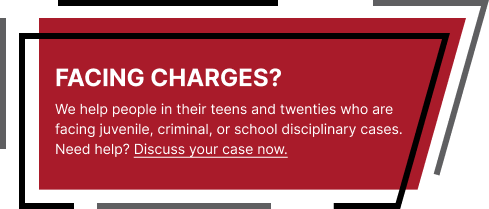
While criminal cases can track many different ways through our judicial system, this article explains the typical path of a criminal case.
Most criminal cases begin when an individual is arrested by a police officer. This arrest is based on the officer’s belief that there is evidence that the person committed a crime. The person arrested, who is called the defendant in the judicial system, is taken to jail.
Once in jail, the defendant has a bond set on most offenses. The defendant can either post that bond, which means the defendant provides a financial guarantee to come to court, or remain in jail. To post the bond, there are typically three options: post the bond in cash, use a bonding company or post a property bond.
While the defendant is dealing with the issue of posting bond, the arresting officer will seek an arrest warrant, which requires the officer to present a very low standard of evidence to a judge. That judge will decide whether the warrant should be issued. While it may seem unusual to arrest someone without a warrant, an officer is allowed to immediately arrest someone who they believe committed a crime.
Once the defendant posts bond, he or she is given a court date. That first court date is the arraignment, which is where the defendant is informed of the formal charges. It is also the defendant’s first opportunity to enter a plea of guilty or not guilty.
Between the time of posting bond and the arraignment, the prosecutor, who is the attorney that works for the state, will review the information the prosecutor’s office has about the case to determine what charges the prosecutor thinks are appropriate. The prosecutor will prepare a formal document, which informs the defendant of the formal charges.
These formal charges can be the same ones the defendant was arrested for, or they can be different, which means there could also be additional charges. Even after the formal charges are prepared, the prosecutor can modify, add, or remove charges, so long as it is done within the time allowed by the law. This can create confusion for defendants that are charged with different crimes than what they were arrested for.
From the arraignment forward, the defendant has the right to enter a plea of guilty. Often, a not guilty plea is entered at arraignment to allow everyone to investigate the case and decide how to move forward. When a not guilty plea is entered, the case is set on a trial calendar.
While the case is ongoing, each side gathers evidence, consults with expert witnesses, obtains records about the officers, and reviews the evidence the opposing attorney is required to provide. Once all of this information is gathered and reviewed, the defense lawyer looks for issues to bring before the judge or to use as part of the negotiation process.
Common issues are whether the questioning of the defendant was legal, the police had a legal reason to stop the defendant, or the police unlawfully seized evidence. If the issues go before the judge, then there is a hearing where the judge decides if something was done improperly. If it was done improperly, then the judge will not allow the illegally obtained evidence to be used at trial. Outside of these legal issues, the attorneys will look at whether the facts make sense, to determine whether they think the defendant would be found guilty or not guilty at trial.
Also during this time, the prosecutor and defense attorney are negotiating to see if they can resolve the case in a way that they can agree on. If they can agree, then the case is usually ended in the way everyone agrees. If they cannot agree on the punishment, but can agree on the charges, then the defendant can offer a non-negotiated guilty plea. At this type of plea, the prosecutor and defense attorney present evidence and argue for what sentence, or punishment, they think the judge should impose. After hearing from both sides, the judge will make a final decision about the punishment.
If what the defendant is guilty of is the issue that the prosecutor and defense attorney cannot agree on, then there is usually a trial. That trial can either be a jury trial or judge trial.
At a jury trial, the entire jury has to agree on whether the defendant is guilty or not guilty of each charge. At a judge trial, the judge decides whether the defendant is guilty or not guilty of each charge.
If the defendant is found guilty, the judge will decide the sentence, based on what the judge heard at trial, as well as the evidence presented by each side, much like a non-negotiated plea. However, this sentence is often harsher than the defendant receives at a guilty plea.
There are appeals and other things that can happen in a case, even after a conviction, but this is the typical path of a criminal case from arrest to trial. This should not be taken as the way every case will move through the court system, which is why it is important to have a skilled attorney who can guide someone accused of a crime through the process.
This is a reprinting of an article written by Paul Ghanouni for the Cherokee Tribune, which was published March 1, 2015. The original article can be found here.
Ghanouni Teen & Young Adult Defense Firm
 N/a
N/a